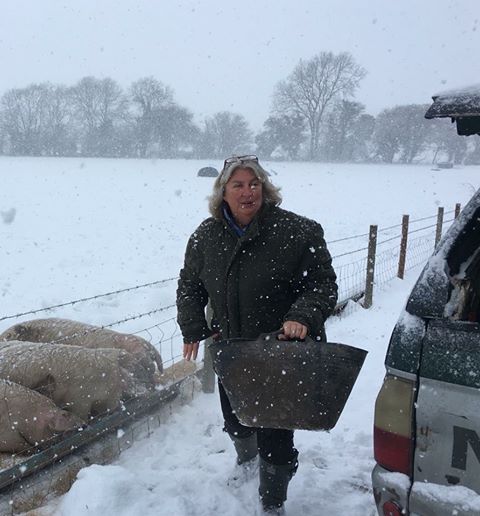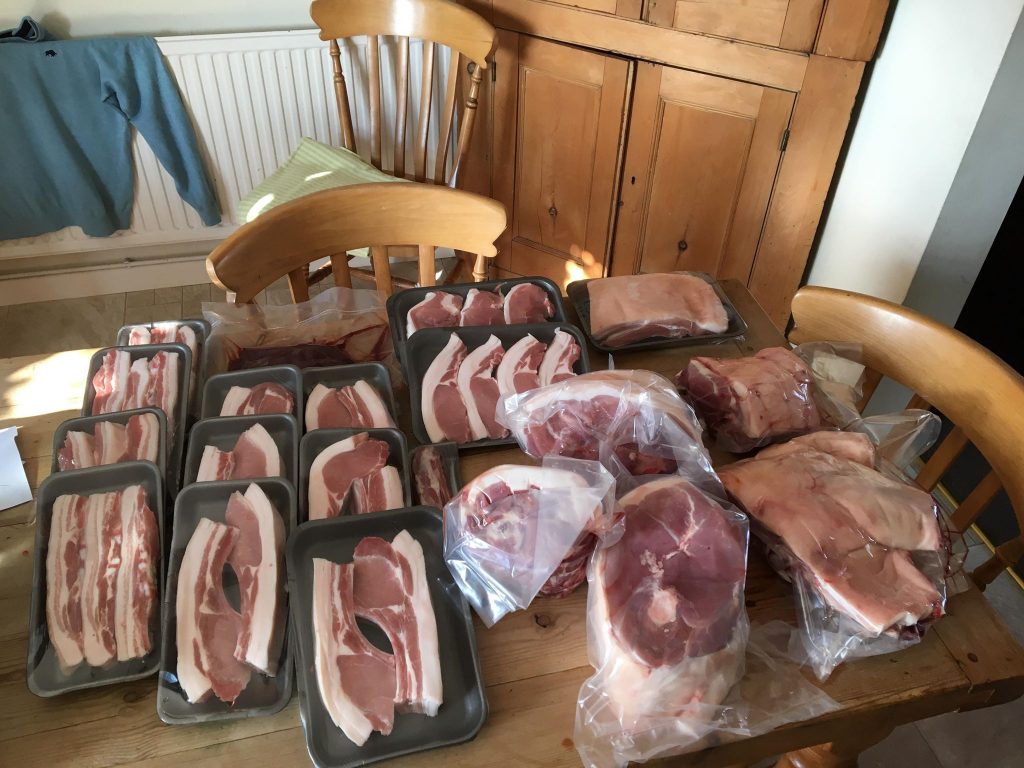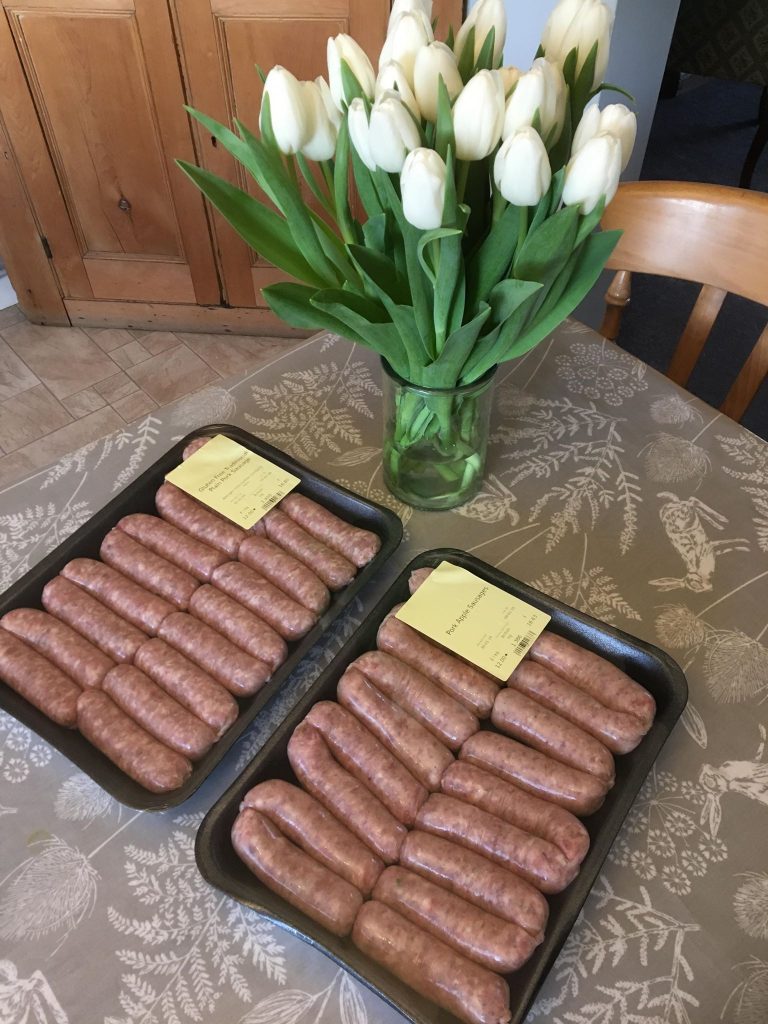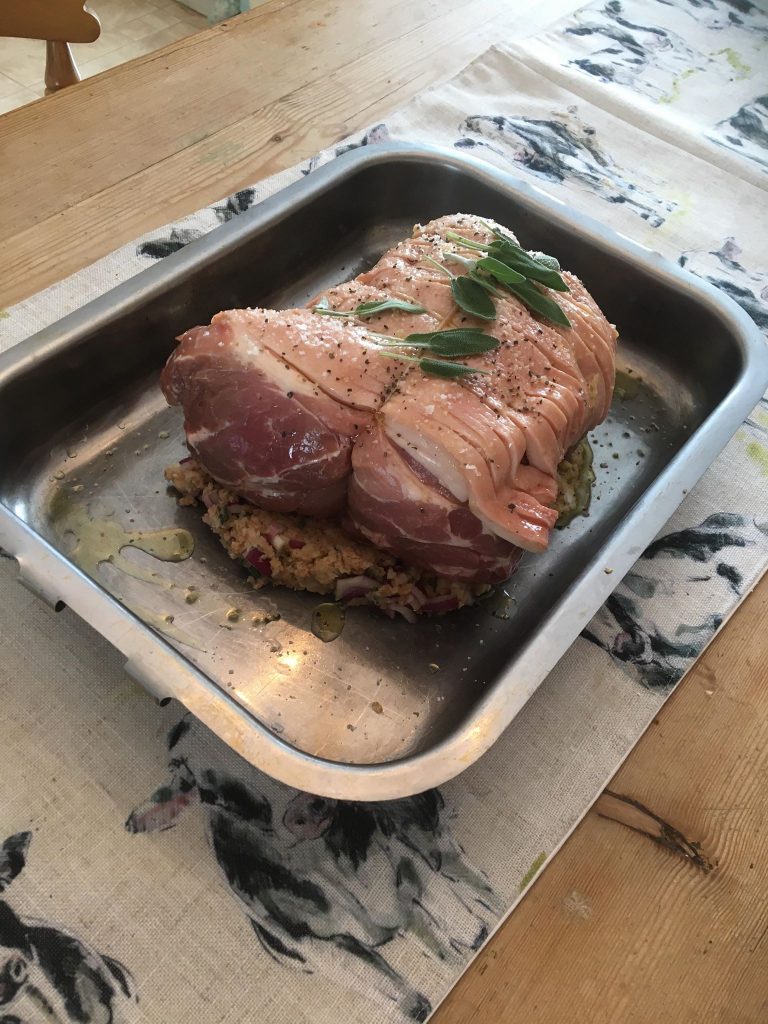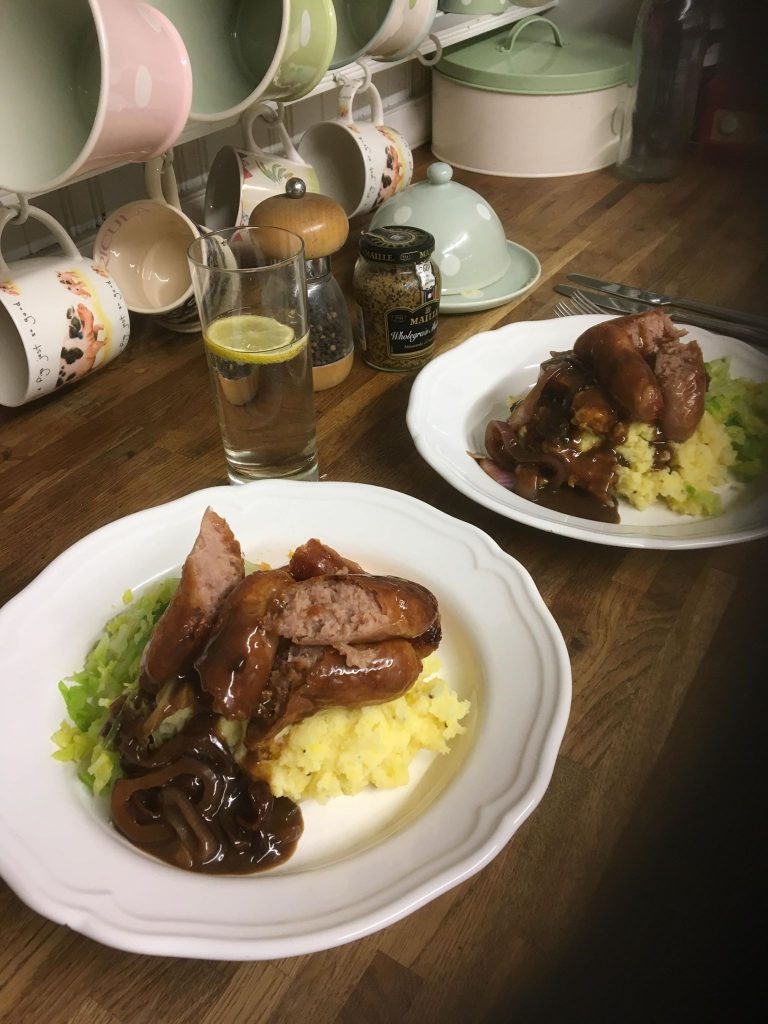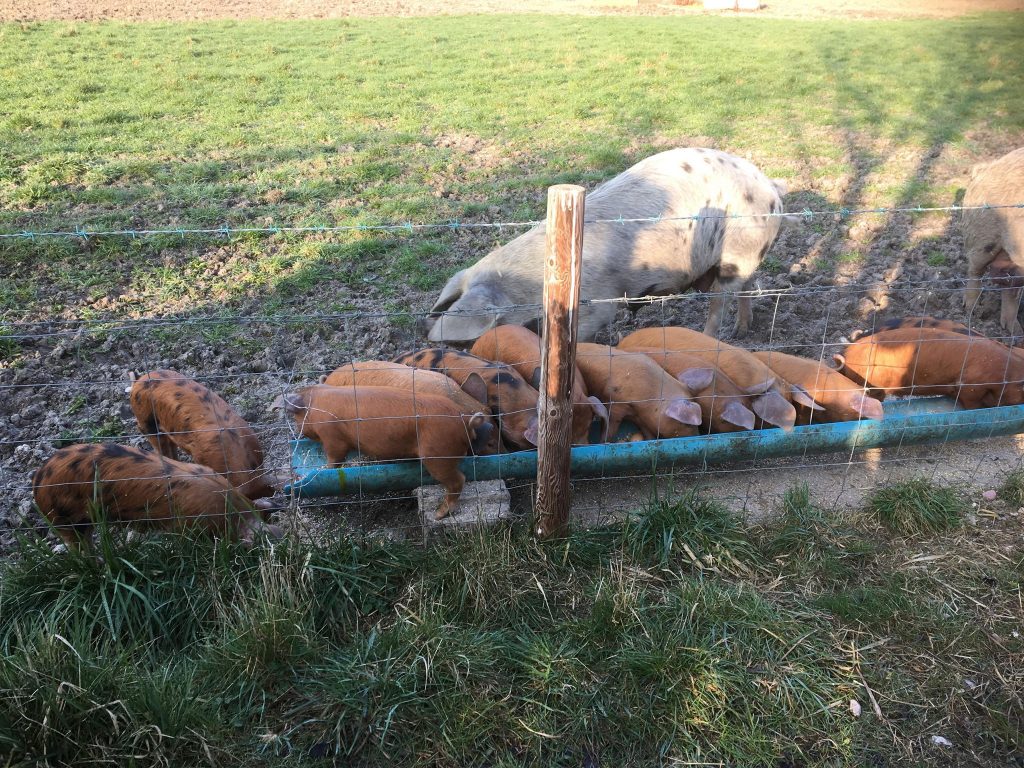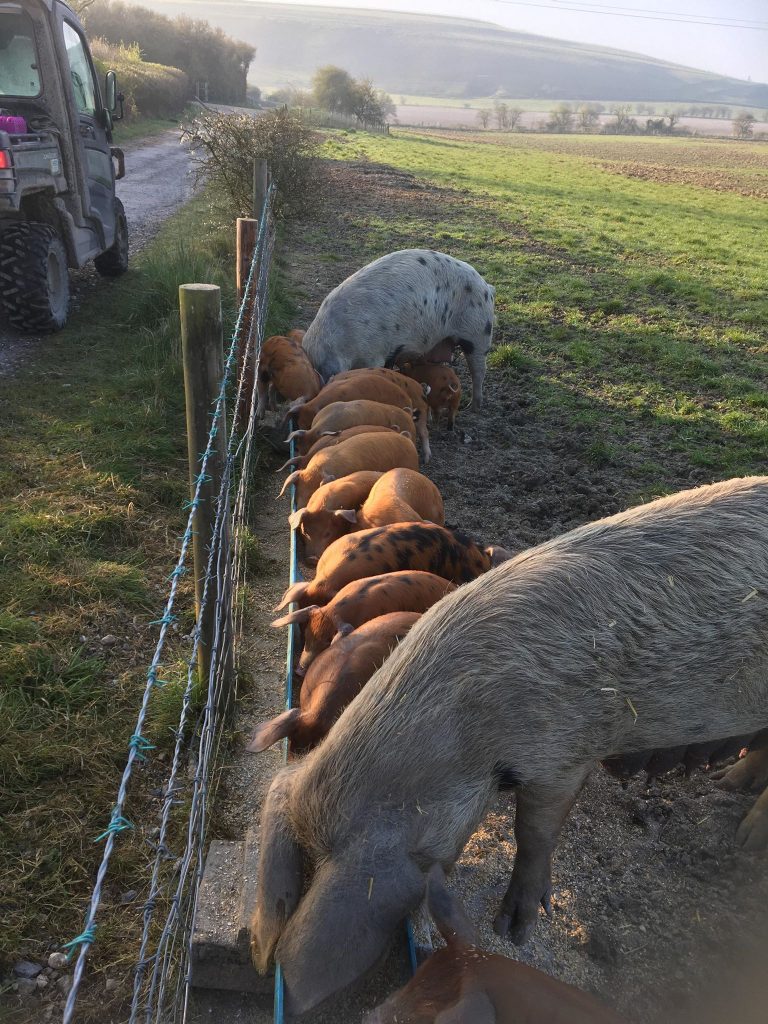We are quite often asked what the main differences between keeping conventional and organic livestock are. Some who asked are surprised that in my opinion there is little difference between organic and any other high welfare system. Access to drugs
Wormers and other medication given to conventional livestock routinely are not allowed although a derogation may be available if exceptional circumstances can be proved.
We started to keep pigs with just one large white gilt, she did us very well but was not ideally suited to our organic system. We experimented with Gloucester old spots but found they tended to get fat quickly. We purchased an Oxford Sandy and Black boar and were very pleased with the cross, after a couple of litters of crosses we purchased 2 Oxford Sandy and Black gilts from Cirencester OSB rare breed show and sale the resulting litters have been very promising and we have decided to concentrate on pedigree pigs.
Finding organic breeding stock, more so with less common breeds can be impossible but the soil association have no problem with conventional animals being converted. Converted breeding stock will never be organic but can produce organic offspring after a 3 month conversation period.
Feeding pigs organically is only difficult because food to soil association standards is hugely expensive, bagged nuts can be as much as £1000 a tonne, so our pigs never see any. We were fortunate to find a 30 year old roller mill for little more than scrap price and now mill our own cereals. The pigs get a kilo a day each, barley is favourite and they will happily eat wheat. Rye however seems to be one of the few things pigs won’t eat it just gets pushed around the trough and you get really discontented stares.
We have not yet been brave enough to farrow outside and the girls come in a couple of days before they are due. They farrow in loose boxes, the first few litters we restricted the amount of straw and set up creeps. The sows piled all the available straw over the piglets and they never used the creeps so now we let them nest with more straw and have discarded the creeps. Piglet mortality is very low.
Even after three years we do not always get the finished pigs right although the fat is never too extreme. We sell most on line or through word of mouth, either as jointed half pigs or sausages. We are lucky that the butcher we use will take as many surplus pigs as we can produce at a good premium.
